Ever glanced out your window and wondered, Wren vs. Sparrow: Which bird are you seeing hopping around your backyard? You’re not alone in this common backyard birdwatching dilemma. Both wrens and sparrows are frequent visitors to North American gardens, and they can be tricky to distinguish. However, with a closer look at their behavior, size, and song, you can easily tell them apart.
This guide dives into the fascinating world of wrens and sparrows, helping you become an expert at identifying these delightful backyard birds. We’ll explore their defining characteristics and give you tips on how to tell them apart so you never have to guess again!
Understanding the Differences: Wren vs. Sparrow Identification

Before we get into the details of wren vs. sparrow identification, let’s first understand what makes each of these birds special. Both wrens and sparrows are small, active birds, but they have distinct differences that set them apart.
Wrens: Tiny Powerhouses with Big Voices
When you think of wrens, imagine a bird small enough to fit in your hand, yet lively enough to fill your entire backyard with its loud, complex song. Wrens, especially the Carolina Wren, are well-known for their powerful voices and bold personalities. These birds are often heard before they’re seen, making their presence known with distinctive calls like the Carolina Wren’s famous “tea-kettle, tea-kettle” song.
- Size and Structure: Wrens are small birds, typically measuring 4.7 to 5.5 inches long.
- Visual Features: Wrens have brown upperparts, buff-colored underparts, a slender curved bill, and a characteristic white stripe above the eye.
- Tail Position: One key clue in the wren vs. sparrow debate is a wren’s upturned tail, which is often held high and is a telltale sign.
- Activity Level: Wrens are acrobatic, often seen hopping through shrubs, foraging for insects, or even hanging upside down to snatch prey.
Wrens are primarily insectivores and thrive on a diet of spiders, beetles, and other small invertebrates. Their energetic foraging habits make them a joy to watch as they dart through your garden in search of food.
Sparrows: Social Seed-Eaters with Distinctive Behaviors
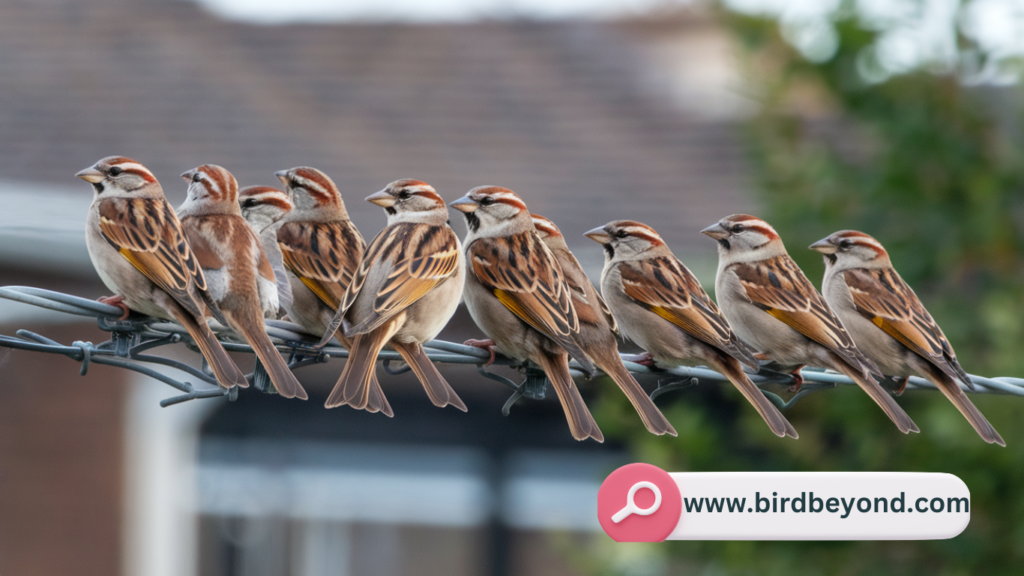
Now, turning to the sparrow side of the wren vs. sparrow comparison. Sparrows, such as the House Sparrow, are slightly larger than wrens and are known for their social behavior. They often travel in flocks and are a common sight in urban areas, bringing a more subdued presence compared to the vocal wrens.
- Size and Build: Sparrows are a bit bigger than wrens, ranging from 5.9 to 6.7 inches long.
- Coloration and Markings: They are typically brown and streaked with gray or tan, with a short, stout bill suited for eating seeds.
- Tail Characteristics: Unlike wrens, sparrows tend to hold their tails horizontally, and their bodies appear more rounded.
- Feeding Habits: Sparrows spend a lot of time on the ground, hopping around in search of seeds and insects, especially when feeding their young.
Sparrows are seed-eaters, though they also consume insects, particularly during the breeding season. Their short, thick beaks make them excellent at cracking open seeds, playing a crucial role in seed dispersal and weed control.
Wren vs. Sparrow: Tips for Identifying Your Backyard Birds
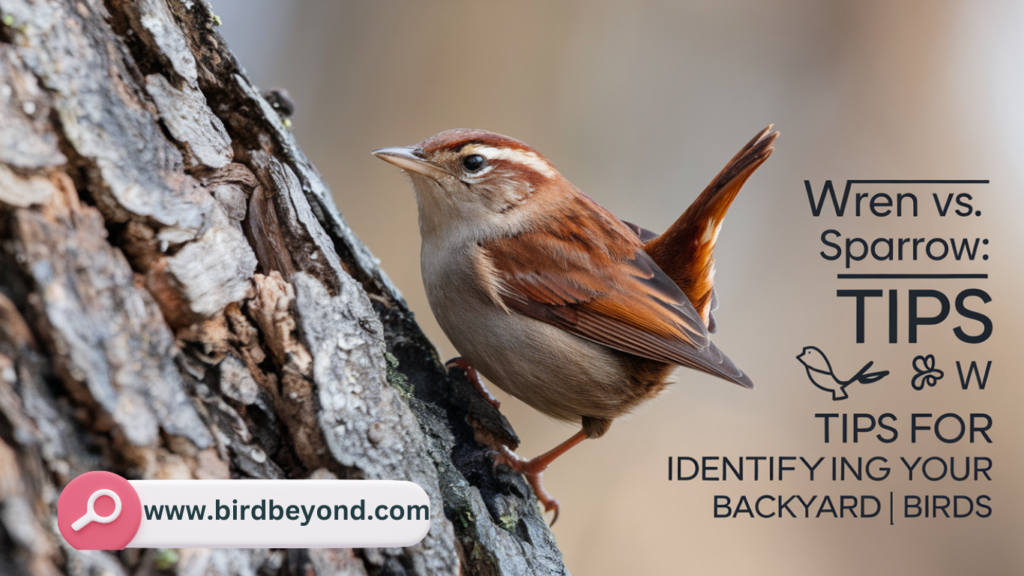
So how can you settle the wren vs. sparrow debate when you spot a bird in your backyard? Here’s how to crack the code and distinguish these feathered visitors:
- Size and Shape Comparison: Wrens are smaller and slimmer, while sparrows have a plumper, more rounded shape.
- Beak Differences: Wrens have thin, slightly curved beaks designed for catching insects. Sparrows, on the other hand, have thick, short beaks for cracking seeds.
- Tail Positioning: A wren’s tail points up, while a sparrow’s tail remains horizontal.
- Song Variations: Wrens are known for their loud, intricate songs, while sparrows stick to simpler chirps and cheeps.
- Behavioral Patterns: Wrens are energetic, often hopping between bushes or leaves. Sparrows tend to be more grounded, hopping along the earth or sitting still in flocks.
By focusing on these distinct features, you’ll have no trouble answering the question, Wren vs. Sparrow: Which bird are you seeing?
Attracting Both Wrens and Sparrows to Your Garden
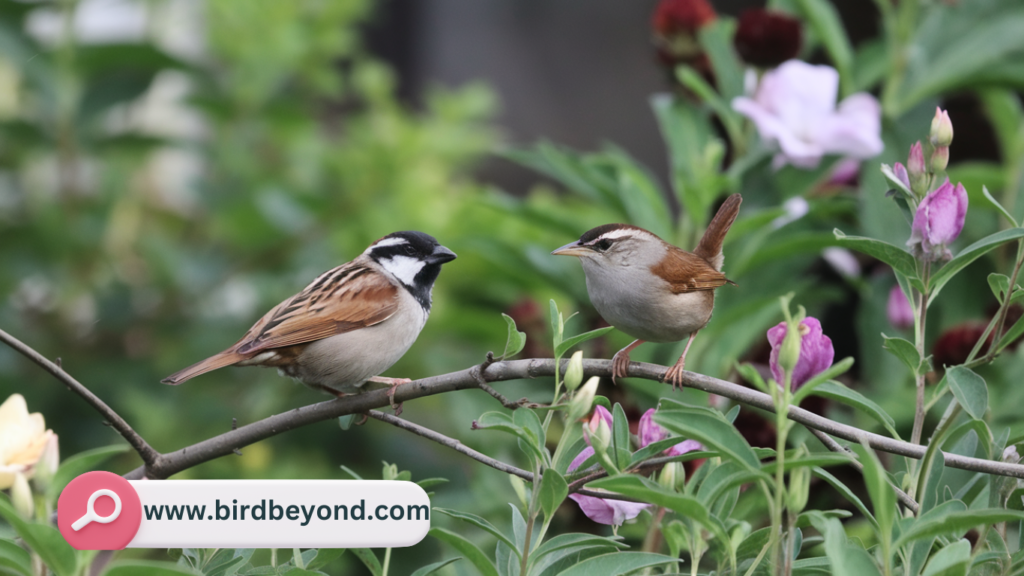
Now that you’re better equipped to tell the difference between wrens and sparrows, you might want to invite them to your backyard for a closer look. Both birds can be attracted to your garden if you provide the right environment.
Tips for Attracting Wrens to Your Yard
- Cover and Shelter: Dense shrubs and brush piles offer ideal hiding spots for wrens.
- Nest Boxes: Installing a wren house with a small entrance can attract wrens to nest in your yard.
- Food Sources: Wrens love suet and mealworms. Offering these at feeders will surely draw them in.
Strategies for Attracting Sparrows to Your Backyard
- Seed Feeders: Sparrows are seed-eaters, so scatter seeds on the ground or use platform feeders.
- Native Plantings: Plant grasses and wildflowers to offer natural food sources and cover.
- Water Features: Provide a shallow birdbath for sparrows to drink and bathe.
By creating a bird-friendly habitat, you can attract both wrens and sparrows to your backyard, enjoying the sights and sounds of these different species throughout the seasons.
Contributing to Bird Conservation and Citizen Science
As you sharpen your birdwatching skills and become an expert in the wren vs. sparrow identification challenge, you’re also contributing to a broader understanding of bird populations. Consider joining citizen science programs like eBird to record your observations. These platforms help scientists track bird populations, migrations, and the impact of climate change on different species.
Some wren and sparrow species are at risk due to habitat loss, urbanization, and climate change. By keeping an eye on these birds in your local area, you’re playing a role in their conservation.
Wren vs. Sparrow: Deepening Your Backyard Birdwatching Experience
When it comes to backyard birdwatching, few debates are as intriguing as the wren vs. sparrow question. These small birds may seem similar at first, but once you understand their differences in size, behavior, and song, you’ll be able to quickly identify which bird you’re watching.
By paying attention to the subtle cues outlined here, you’ll never be left wondering, Wren vs. Sparrow: Which bird are you seeing? The more you observe, the more you’ll appreciate the incredible diversity that exists just outside your window.
FAQs
Wren vs. Sparrow: Identifying Key Differences
What are the main differences between wrens and sparrows?
Wrens are typically smaller and known for their intricate songs and distinctive upturned tails, while sparrows are slightly larger, more social, and have stout beaks adapted for seed-cracking.
Wren vs. Sparrow: Habitat Coexistence
Can wrens and sparrows be found in the same area?
Yes, in the wren vs. sparrow debate, both species can coexist in many habitats, including urban gardens, parks, and rural areas.
Attracting Wrens: Tips for Birdwatchers
How can I attract more wrens to my garden?
To attract wrens, which are often confused with sparrows, provide dense shrubs for shelter, install wren houses, and offer food sources like suet and mealworms.
Sparrows and Their Impact on Other Birds
Are sparrows a threat to other bird species?
In the discussion of wren vs. sparrow dynamics, House Sparrows can compete with native birds for nesting sites and food, potentially impacting local bird populations.
Wren Migration: Understanding Movement Patterns
Do wrens migrate?
Some wren species are migratory, while others may remain in their habitats year-round, depending on food availability and climate, influencing the wren vs. sparrow relationship in various environments.
Learn more about Birds

William Henry is a distinguished blogger with a flair for avian storytelling. With a wealth of experience, he delivers captivating insights and expert knowledge to Bird Beyond. William’s passion for birds and his engaging writing style make him a standout voice in the birdwatching community, offering readers both valuable information and delightful narratives.

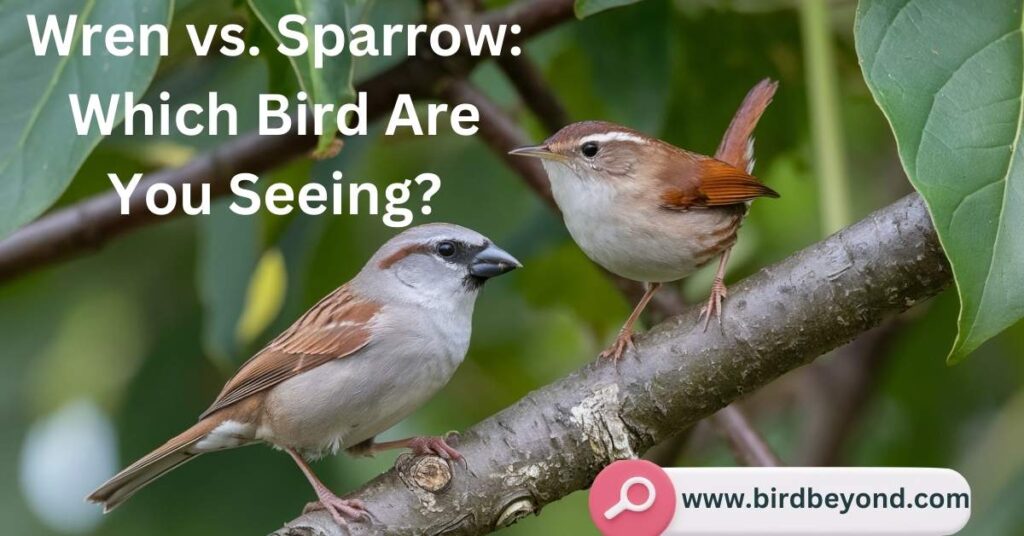
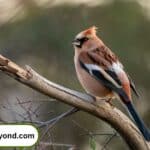
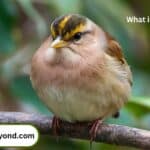

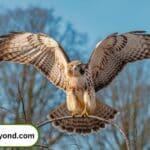

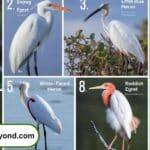
good